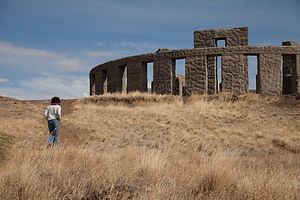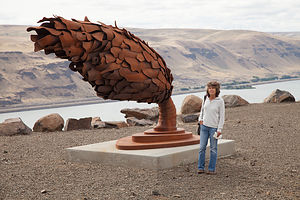- Home
- About
- Map
- Trips
- Bringing Boat West
- Migration West
- Solo Motorcycle Ride
- Final Family XC Trip
- Colorado Rockies
- Graduates' XC Trip
- Yosemite & Nevada
- Colorado & Utah
- Best of Utah
- Southern Loop
- Pacific Northwest
- Northern Loop
- Los Angeles to NYC
- East Coast Trips
- Martha's Vineyard
- 1 Week in Quebec
- Southeast Coast
- NH Backpacking
- Martha's Vineyard
- Canadian Maritimes
- Ocracoke Island
- Edisto Island
- First Landing '02
- Hunting Island '02
- Stowe in Winter
- Hunting Island '01
- Lake Placid
- Chesapeake
- Provincetown
- Hunting Island '00
- Acadia in Winter
- Boston Suburbs
- Niagara Falls
- First Landing '99
- Cape Hatteras
- West Coast Trips
- Burning Man
- Utah Off-Roading
- Maui
- Mojave 4WD Course
- Colorado River Rafting
- Bishop & Death Valley
- Kauai
- Yosemite Fall
- Utah Off-Road
- Lost Coast
- Yosemite Valley
- Arizona and New Mexico
- Pescadero & Capitola
- Bishop & Death Valley
- San Diego, Anza Borrego, Joshua Tree
- Carmel
- Death Valley in Fall
- Yosemite in the Fall
- Pacific Northwest
- Utah Off-Roading
- Southern CA Deserts
- Yosemite & Covid
- Lake Powell Covid
- Eastern Sierra & Covid
- Bishop & Death Valley
- Central & SE Oregon
- Mojave Road
- Eastern Sierra
- Trinity Alps
- Tuolumne Meadows
- Lake Powell Boating
- Eastern Sierra
- Yosemite Winter
- Hawaii
- 4WD Eastern Sierra
- 4WD Death Valley +
- Southern CA Deserts
- Christmas in Tahoe
- Yosemite & Pinnacles
- Totality
- Yosemite & Sierra
- Yosemite Christmas
- Yosemite, San Diego
- Yosemite & North CA
- Seattle to Sierra
- Southwest Deserts
- Yosemite & Sierra
- Pacific Northwest
- Yosemite & South CA
- Pacific Northwest
- Northern California
- Southern Alaska
- Vancouver Island
- International Trips
- Index
- Tips
- Books
- Photos/Videos
- Search
- Contact
Maryhill Museum of Art, WA
Wednesday, September 25, 2013 - 12:00pm by Lolo
15 miles and 0.5 hours from our last stop
Travelogue
 Lolo approaching Maryhill StonehengeThe Maryhill Museum of Art was a very pleasant surprise. Everything about it was just so unique and eccentric. You just don’t expect to come upon a huge, concrete, neo-classical mansion out in the middle of nowhere. I felt more like I was in Newport, Rhode Island than in a town with a population of 98. Its setting atop a remote bluff overlooking the river was absolutely gorgeous.
Lolo approaching Maryhill StonehengeThe Maryhill Museum of Art was a very pleasant surprise. Everything about it was just so unique and eccentric. You just don’t expect to come upon a huge, concrete, neo-classical mansion out in the middle of nowhere. I felt more like I was in Newport, Rhode Island than in a town with a population of 98. Its setting atop a remote bluff overlooking the river was absolutely gorgeous.
The parking lot was quite large, so I imagine they do get lots of visitors, but today, being a weekday, was pretty quiet. We took the trail along the bluff admiring the views along the way. Saving the outdoor sculpture garden for afterwards, we walked up the concrete, driveway-like ramp that served as the entrance to the museum. We later learned that this indeed did once serve as a driveway when it was still Sam Hill’s mansion. Mr. Hill would have cars bring his guests up the west ramp, through the house (where they would be dropped off), and then back out and down the east ramp. Talk about being a good host.
 Maryhill Museum of ArtTo understand this museum better, it is really helpful to know a little more about Sam Hill, who originally came to this area in 1907 with the intention of establishing a Quaker agricultural town. However, the lack of irrigation and the remoteness of the location caused his dream to fail, and construction on his mansion stopped in 1917.
Maryhill Museum of ArtTo understand this museum better, it is really helpful to know a little more about Sam Hill, who originally came to this area in 1907 with the intention of establishing a Quaker agricultural town. However, the lack of irrigation and the remoteness of the location caused his dream to fail, and construction on his mansion stopped in 1917.
As you will see, Sam Hill not only had an eclectic taste in art, but a rather eclectic one in friendships as well. One of his good friends was Loie Fuller, a pioneer of modern dance in Paris, who regularly performed at the Folies Bergere. In fact, the museum contains an old black and white, silent movie of her doing a Serpentine Dance. During this dance, she would hold her long skirt in her hands and wave it around, allowing the stage light behind to reveal her form inside. It was bizarre.
 Lolo with Chess Sets from Around the WorldAnyway, it was this friend who suggested he turn his mansion into an art museum when his dream of a Quaker town failed. She knew a lot of French artists, so she helped him acquire many works, including 80 sculptures by Auguste Rodin.
Lolo with Chess Sets from Around the WorldAnyway, it was this friend who suggested he turn his mansion into an art museum when his dream of a Quaker town failed. She knew a lot of French artists, so she helped him acquire many works, including 80 sculptures by Auguste Rodin.
Oddly enough, another one of his very good friends was Queen Marie of Romania, the granddaughter of Britain’s Queen Victoria. She contributed Orthodox icons and various furnishings and objects from her palace.
A third friend of his was Alma de Bretteville Spreckels, the wife of a San Francisco sugar magnate. She became a member of the museum’s board of trustees and helped finish the museum after Hill’s death. Under her guidance the museum was opened to the public in 1940.
 Lolo with her Favorite Pine ConeIt was hard at first for us to figure out any unifying theme to the exhibits within the museum, because it really is a reflection of the eclectic taste and friendships of Sam Hill. Each room we entered was a total surprise.
Lolo with her Favorite Pine ConeIt was hard at first for us to figure out any unifying theme to the exhibits within the museum, because it really is a reflection of the eclectic taste and friendships of Sam Hill. Each room we entered was a total surprise.
Besides the Serpentine Dance motion picture, Rodin sculptures, and Romanian royal collection mentioned already, there was a room with miniature French fashion mannequins, which was adorable, another one with chess sets from around the world (my personal favorite exhibit), and still another with Native American baskets. Nothing would have surprised me.
I would have to say that one of my favorite ways of viewing art is in a beautiful natural setting, and the sculpture garden at Maryhill rivaled the best. There are only two other places, Storm King Art Center in New York State and Brookgreen Gardens in South Carolina, where I have so thoroughly enjoyed an outdoor sculpture garden.
 Maryhill Museum of Art and Quantum ManWhile there were dozens of works to view and enjoy, I had two particular favorites. The first was Quantum Man, a walking man comprised of over a hundred vertically oriented steel sheets. When approaching the sculpture from the front, it appeared as a sheet of solid steel, but when viewed from the side it practically disappeared as light shone through the spaces between the sheets. My second was a very large pine cone (bigger than me) bending over in the wind.
Maryhill Museum of Art and Quantum ManWhile there were dozens of works to view and enjoy, I had two particular favorites. The first was Quantum Man, a walking man comprised of over a hundred vertically oriented steel sheets. When approaching the sculpture from the front, it appeared as a sheet of solid steel, but when viewed from the side it practically disappeared as light shone through the spaces between the sheets. My second was a very large pine cone (bigger than me) bending over in the wind.
Three miles east of the museum is another bizarre example of Sam Hill’s unique artistic taste, a concrete, full-size replica of Stonehenge. As with everything regarding Sam Hill, there is always an interesting reason behind his art decisions. When traveling to England during World War I, Sam Hill visited the real Stonehenge where he was told that the site had been used for human sacrifices (one of many theories as to its purpose). Upon hearing this, he remarked: “After all our civilization, the flower of humanity is still being sacrificed to the god of war on fields of battle.”
When he returned home to Maryhill, he commissioned the construction of a full-size replica of Stonehenge as a memorial to the soldiers of Klickitat County, Washington, who had sacrificed their lives in the war. Hill chose a ledge below his Stonehenge replica for his own burial site.
It definitely had the feel of a solemn and sacred place.
Description
 Native American Basket Sculptures and ViewpointThe Maryhill Museum of Art is a small museum situated atop a remote bluff overlooking the Columbia River Gorge in the town of Maryhill, Washington.
Native American Basket Sculptures and ViewpointThe Maryhill Museum of Art is a small museum situated atop a remote bluff overlooking the Columbia River Gorge in the town of Maryhill, Washington.
Designed in 1914, the museum was originally the residence of eccentric millionaire Sam Hill, whose plan was to establish a Quaker agricultural town. Unfortunately, his dreams were unrealized, and in 1927 he decided to turn it into an art museum. Today it is one of the finest, most eclectic, and least visited museums in the Pacific Northwest.
It’s very eclectic collection includes: treasures from his good friend Queen Marie of Romania’s royal collection, sculptures and drawings by Auguste Rodin, chess sets from around the world, miniature French fashion mannequins, and Native American baskets.
 Room of Rodin SculpturesThe grounds also include an outdoor sculpture garden from which the views of the Columbia River Gorge are spectacular.
Room of Rodin SculpturesThe grounds also include an outdoor sculpture garden from which the views of the Columbia River Gorge are spectacular.
Three miles east of the museum is Sam Hill’s concrete, full-size replica of Stonehenge. It was built in 1918 as a memorial to the soldiers of Klickitat County, Washington, who had died in World War I. As with the original, the altar stone is placed to be aligned with sunrise on the Summer Solstice. Hill’s original selection of Stonehenge as a fitting memorial for dead soldiers was based on the theory that the original Stonehenge had been used as a sacrificial site. Being an anti-war Quaker, Hill felt that war was a senseless sacrifice of human life.
- ‹ previous
- 10 of 19
- next ›
Maryhill Museum of Art location map in "high definition"
Javascript is required to view this map.
